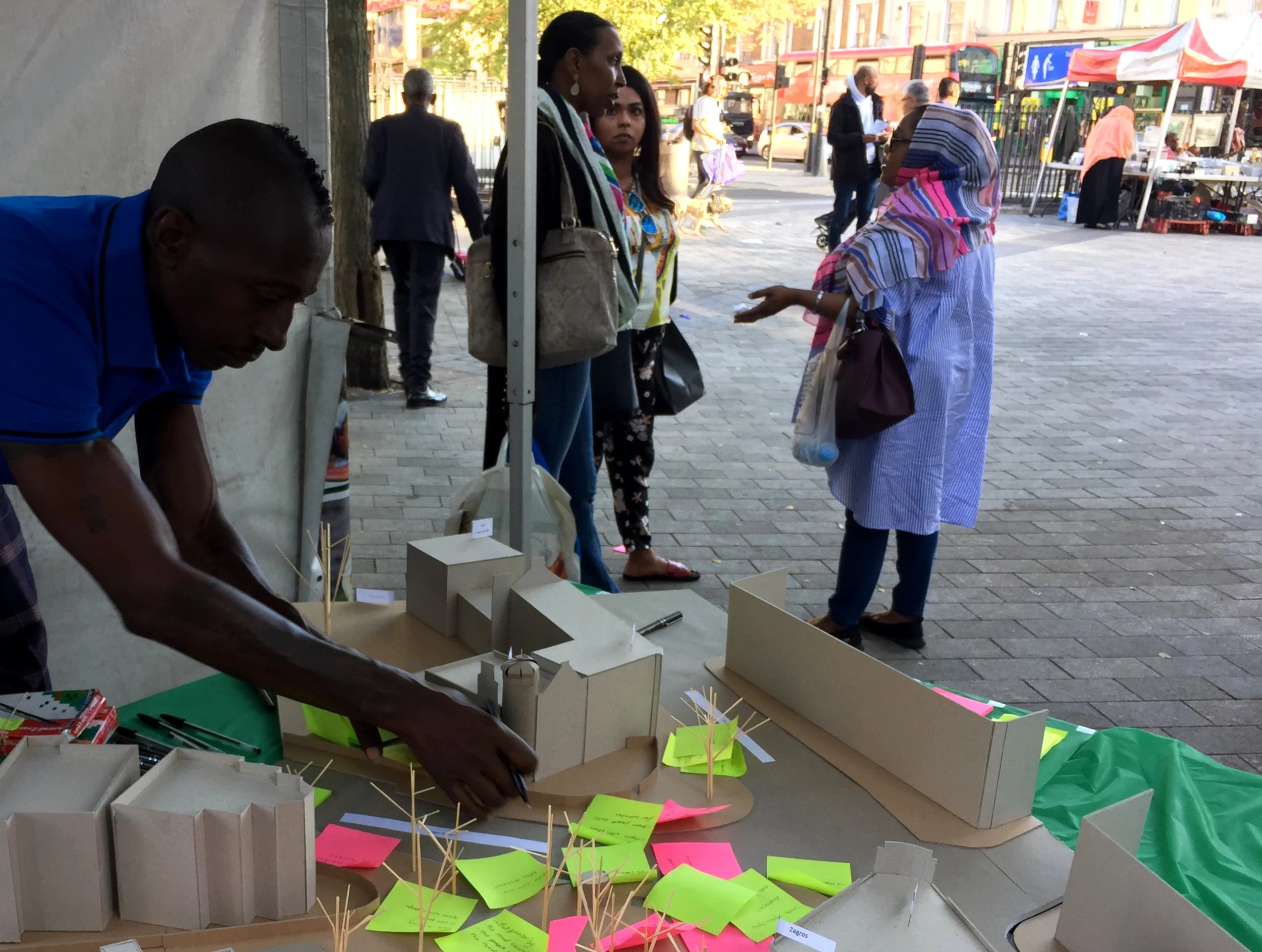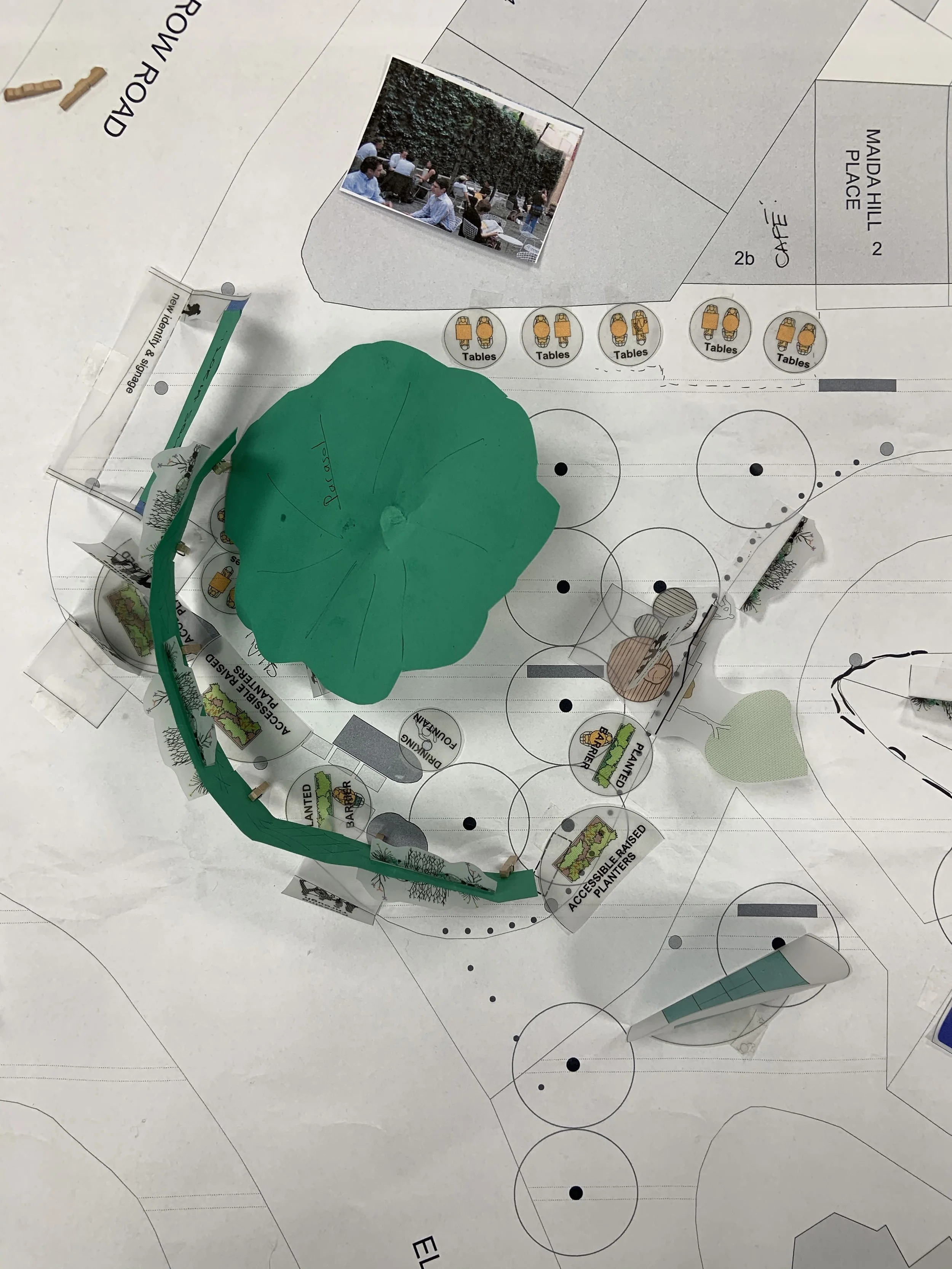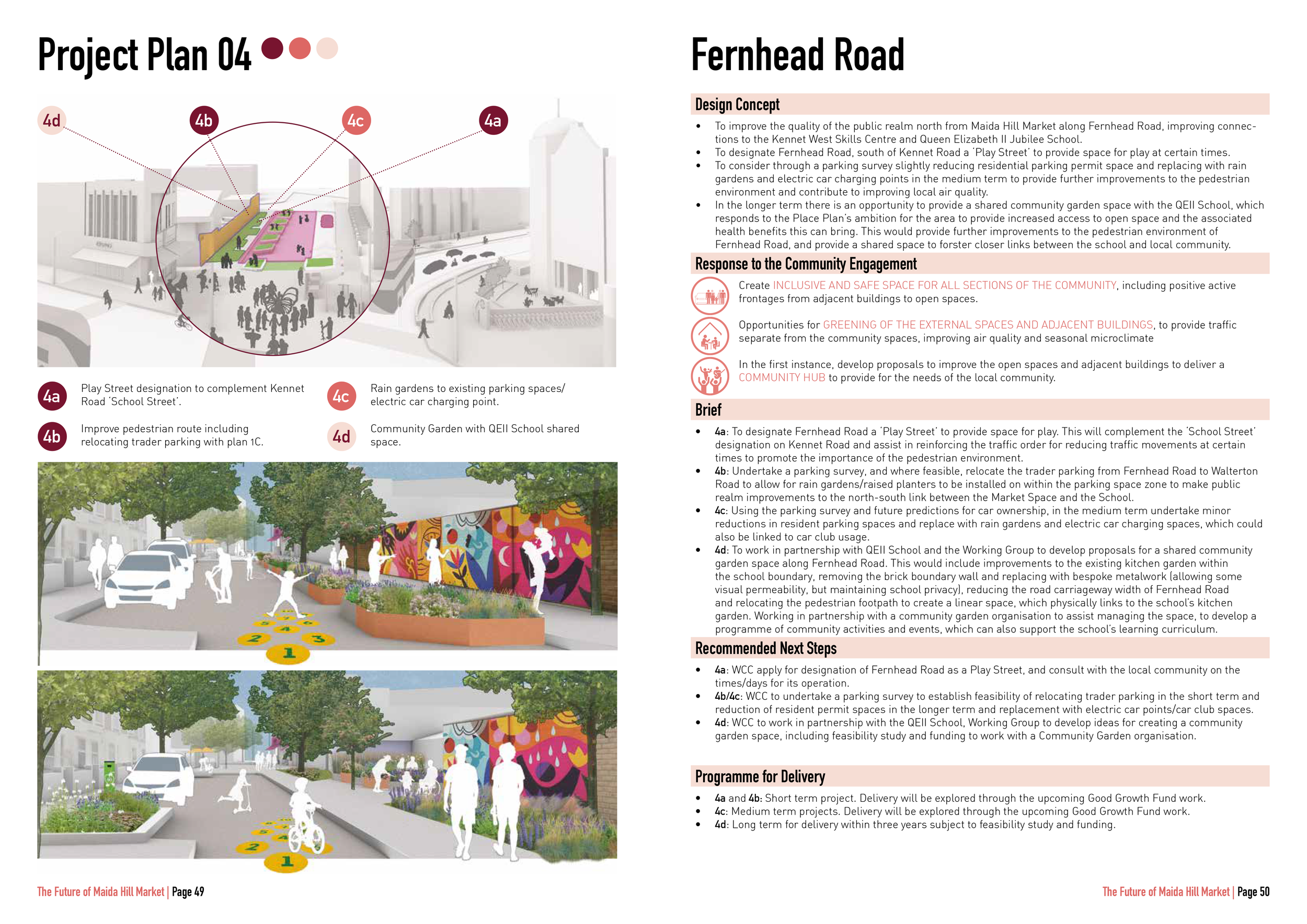Maida Hill Market is a public square in West London that serves a diverse community of people from different cultural and socio-economic backgrounds. Forged in 2009 of an existing traffic junction it never quite cast off its transient nature. And yet, it is the focal point for much of the neighbourhood’s street life: There is a popular market stall selling falafel, chairs and tables spill out from the Maida Hill Café and locals gather to play dominos and to socialise. The square also reflects some of the neighbourhood’s challenges: with the decline in addiction- and mental health service provision and the increase in economic pressures, conflicts have started to play out in the urban realm.
The local Authority, Westminster City Council (WCC) secured funding for an upgrade of the square through the Greater London Good Growth Fund and appointed Breeze Landscape Architecture and Citizen Architects to develop a community-led vision for the Maida Hill Market area of Harrow Road. The aim was to leverage this urban improvement project as a catalyst to build greater community cohesion.
We designed an engagement program that brought together a Working Group consisting of representatives from neighbourhood forums, local businesses, a local school and active members of the community to co-design improvements to a public square. The members of the Working Group were selected through public events on Maida Hill Market, in conversation with local organisations and through open invitations. Gradually, we moved from collecting more general views on what was working well, and what needed to change around the square to very hands-on co-design sessions. Using a toolkit resembling a board game, working group members were able to work together in smaller groups to understand the spatial and urban implications of their ideas, negotiate the best possible solutions between themselves and reach wide-spread consensus on proposals and priorities.
We then presented the working groups’ proposals to different Westminster City Council Departments to assess their feasibility. This engagement around a specific place again sparked wider inter-departmental conversations.
The engagement was an iterative process, with design proposals being passed between the Working Group, Council Departments and the wider community. Due to national restrictions in response to the Covid-19 pandemic, the latter stages of the project were developed with virtual input from the group.
Our work resulted in improved community cohesion and a working group of local organisations and individuals who the Council can turn to for engagement on a range of other issues.
The vision that was developed by the Working Group seeks to build upon the existing community infrastructure that exists, create improvements to the existing public space, make better use of adjacent streets and identify neighbouring buildings which could be activated in a more positive way to support new community uses. Some of the ‘short term’ interventions are now under construction.
Collecting the views of the wider community
Detail of design proposal devevoped by Working Group using the co-design toolkit
Refining the Working Group’s views on interventions on Fernhead Road
Working Group’s agreed Project Plan for interventions on Fernhead Road
Refining the Working Group’s views on community use of existing building
Working Group’s agreed Project Plan for community use of existing building
Refining the Working Group’s views on greening Maida Hill Market
Working Group’s agreed Project Plan for greening Maida Hill Market





